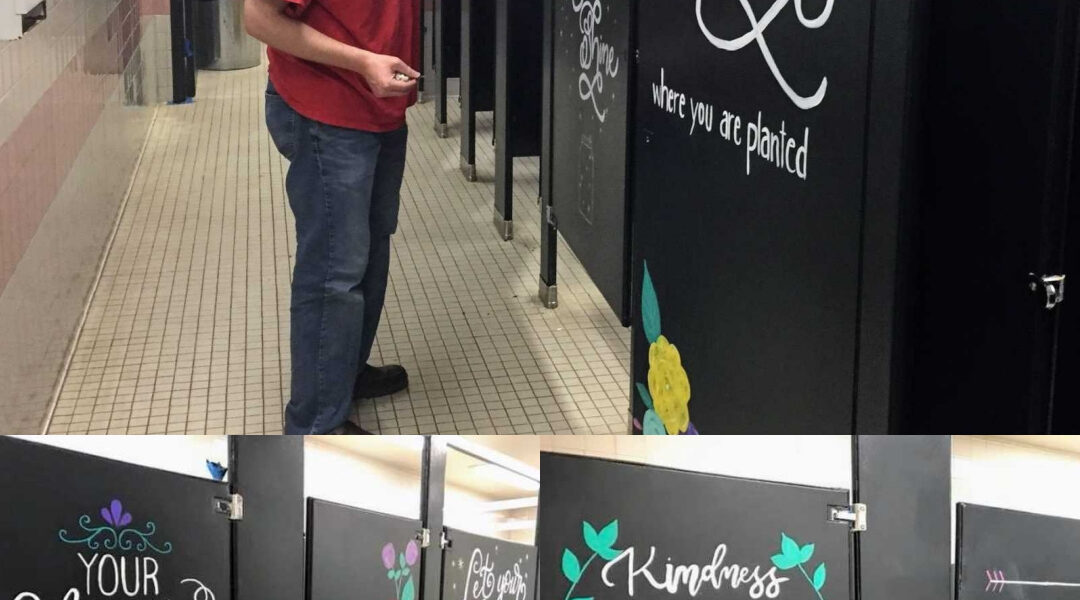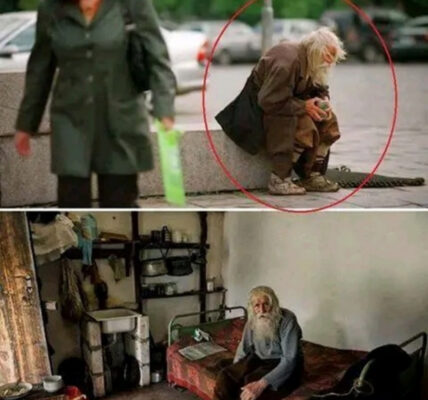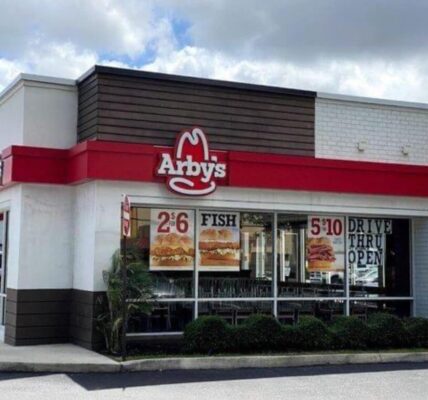It began quietly — with heartbreak, with hope, and with five determined mothers holding paintbrushes in their hands.
The tragedy in Parkland, Florida had left the entire country shaken. For the parents, teachers, and children at Mary Moore Elementary, the images on the news were too heavy to bear. The fear, the sadness, and the endless noise of the world had begun to seep into the hearts of even the youngest students.
“We needed light again,” Principal Amy Crowley said softly. “We needed to remind our kids that the world isn’t just what they see online — that there’s still kindness, courage, and beauty in it.”
That’s when a small idea, whispered in a hallway, began to grow.

A Simple Idea, A Big Purpose
It started with a group of fifth-grade moms — five women who wanted to do something that would lift the spirits of their children and remind them, every single day, that they were loved, seen, and capable.
They’d noticed how easily negativity spread — how quickly the laughter of children could be drowned out by headlines, by social media cruelty, by worry. And one night, over coffee and conversation, a thought was spoken aloud:
“What if we could fill the school with positive words instead?”
The idea was humble at first — maybe posters, or handwritten notes. But someone suggested painting the messages directly onto the walls where students least expected them — inside the school bathrooms.
At first, there was laughter. Then silence. Then nods.
Because, as one mother put it, “That’s where they go when they feel alone.”
It made perfect sense. The bathroom — that hidden corner of every school where tears are wiped away in silence, where nerves tremble before big tests, where students escape the noise for just a minute — could become a sanctuary instead. A place that whispered, “You’re enough. You matter. You can do this.”

37 Hours of Love
The following weekend, they gathered in the empty school. The hallways echoed with the quiet hum of fluorescent lights. Paint cans, rollers, sandpaper, and brushes were piled high.
They worked for thirty-seven hours — sanding, scrubbing, and transforming every stall door into a canvas of hope.
The old beige paint disappeared under layers of midnight black, turning the bathroom into something like an art studio. On that dark background, color began to bloom.
One door read:
“Bloom where you are planted.”
Another whispered:
“Your mistakes don’t define you.”
Above the sinks, in bold, confident strokes:
“You are enough.”
Across another stall:
“She believed she could, so she did.”
And in playful colors, with flowers, vines, and hearts:
“Kindness changes everything.”
The women painted until their hands cramped and their backs ached. They laughed. They cried. They talked about their own school days — the teachers who encouraged them, the bullies who hurt them, the times they wished someone had reminded them of their worth.
One mom paused to trace her fingers over the words she had just finished: “Every day is a chance to get better.”
Her voice broke as she whispered, “If even one kid reads this and feels seen, it’s worth every minute.”

The Power of Community
Almost everything was donated. Sherwin-Williams gave the paint. Home Depot supplied tools. Local businesses — JC Nails and Great Oak Dental — sent money and encouragement.
When the mothers ran out of brushes late Saturday night, a janitor who had stayed behind quietly went to his car and returned with his own set. “My daughter goes here,” he said simply. “Can’t let you run out of hope.”
By Sunday evening, when the final coat dried, the bathrooms were unrecognizable. What was once plain and ordinary had become a gallery of joy — a reflection of a community’s love poured into every word, every color, every stroke.
The Monday Morning Surprise

The fifth graders didn’t know what awaited them.
When they returned to school that Monday, chatter filled the air — talk about homework, sports, weekend plans. But then, one by one, students began walking into the restrooms… and stopping.
A hush fell over the crowd.
At first, they just stared — wide-eyed, smiling, whispering to each other. Then came the laughter, the gasps, the selfies.
“Did you see this one?” a girl shouted, pointing to a door painted with the words:
“You will move mountains.”
Another student ran out of the bathroom, grinning from ear to ear. “Miss Thompson! You have to see this!”
Within minutes, word spread through the hallways. Teachers poked their heads out of classrooms, smiling as students ran past. The principal stepped outside her office to find the school buzzing — not with gossip, not with worry, but with pure happiness.
“They were absolutely glowing,” Principal Crowley said. “Our fifth graders have taken such pride in it. They feel like it was made for them — and it was.”
The Theme of Happiness

That year, the school’s theme had been Happiness, inspired by Dr. Shawn Achor’s book The Happiness Advantage.
But after Parkland, the word had felt fragile — almost naïve. Now, it took on a deeper meaning.
“Happiness doesn’t mean ignoring pain,” one teacher reflected. “It means choosing hope anyway. It means creating light even when the world feels dark.”
The messages on those bathroom walls became that light. Students began writing their own notes of encouragement to tape inside lockers and classrooms. Teachers quoted the stall door phrases during morning announcements.
Soon, the school was covered in kindness — not because of a program, but because the children had made it their own.
The Ripple Effect

When photos of the project were shared on Facebook, the post spread across the country. Thousands of people commented, shared, and tagged other schools.
Principals from nearby districts reached out, asking how they could start something similar. Teachers sent emails full of gratitude. Parents wrote messages saying the project had sparked conversations with their children about kindness and mental health.
One comment read:
“My daughter struggles with anxiety. If she walked into a bathroom like that and saw those words, it would change her whole day. Thank you for doing this.”
Another said:
“The world needs more of this — not just lessons from textbooks, but lessons from the heart.”
The Mary Moore Elementary moms were overwhelmed. What had started as a simple act of love was now inspiring schools across the nation.
A Legacy of Kindness

Weeks later, the paint was still perfect — bright, bold, alive. But what mattered most wasn’t the color on the walls. It was what had changed inside the hearts of the children.
Students began to see their school differently. It wasn’t just a place to learn math and reading. It was a place that reminded them they mattered.
One fifth grader wrote in her journal, “Sometimes I go in just to read the words when I feel sad. My favorite one is ‘You are enough.’ Because sometimes I forget.”
That simple sentence — you are enough — had become a lifeline for so many.
And the moms? They weren’t finished. Encouraged by the impact, they started brainstorming new projects: murals in hallways, “kindness trees” in classrooms, and handwritten notes slipped into library books.
Their message was spreading — one word, one child, one act of love at a time.
The Lasting Message

Months after the project, the school held an assembly. The principal invited the moms onstage. The students gave them a standing ovation that lasted nearly five minutes.
Through tears, one of the mothers spoke to the crowd. “When we painted those words, we wanted to remind you of something,” she said, her voice trembling. “You don’t have to be perfect. You don’t have to fit in. You don’t have to be anyone else. You are enough — just as you are.”
The room erupted in applause.
In that moment, everyone in the gym — teachers, parents, children — felt the same thing: hope.
The world outside might still be heavy with sadness, but inside those school walls, there was light again.
Because five mothers decided that love could live anywhere — even on bathroom walls.
A School Reborn

Today, visitors who walk through Mary Moore Elementary can still see those doors — each one a piece of art, each message a promise.
Above the water fountains, the words read:
“You are enough.”
By the exit doors:
“Be the reason someone smiles today.”
And on the wall leading to the playground:
“Kindness changes everything.”

For the children who pass by each day, those words are more than paint. They’re reminders that the world can be kind — and that they can be the ones to make it so.
As Principal Crowley said, “We can’t erase the pain of what’s happening in the world. But we can teach our kids to answer it with love.”
And so, a simple act — sanding, painting, loving — became something far greater: a movement, a legacy, a message that endures.
Because sometimes, the most powerful lessons don’t come from textbooks or lectures — they come from a wall that whispers, every single day:
You are enough. You are loved. And you can change the world — one act of kindness at a time.





